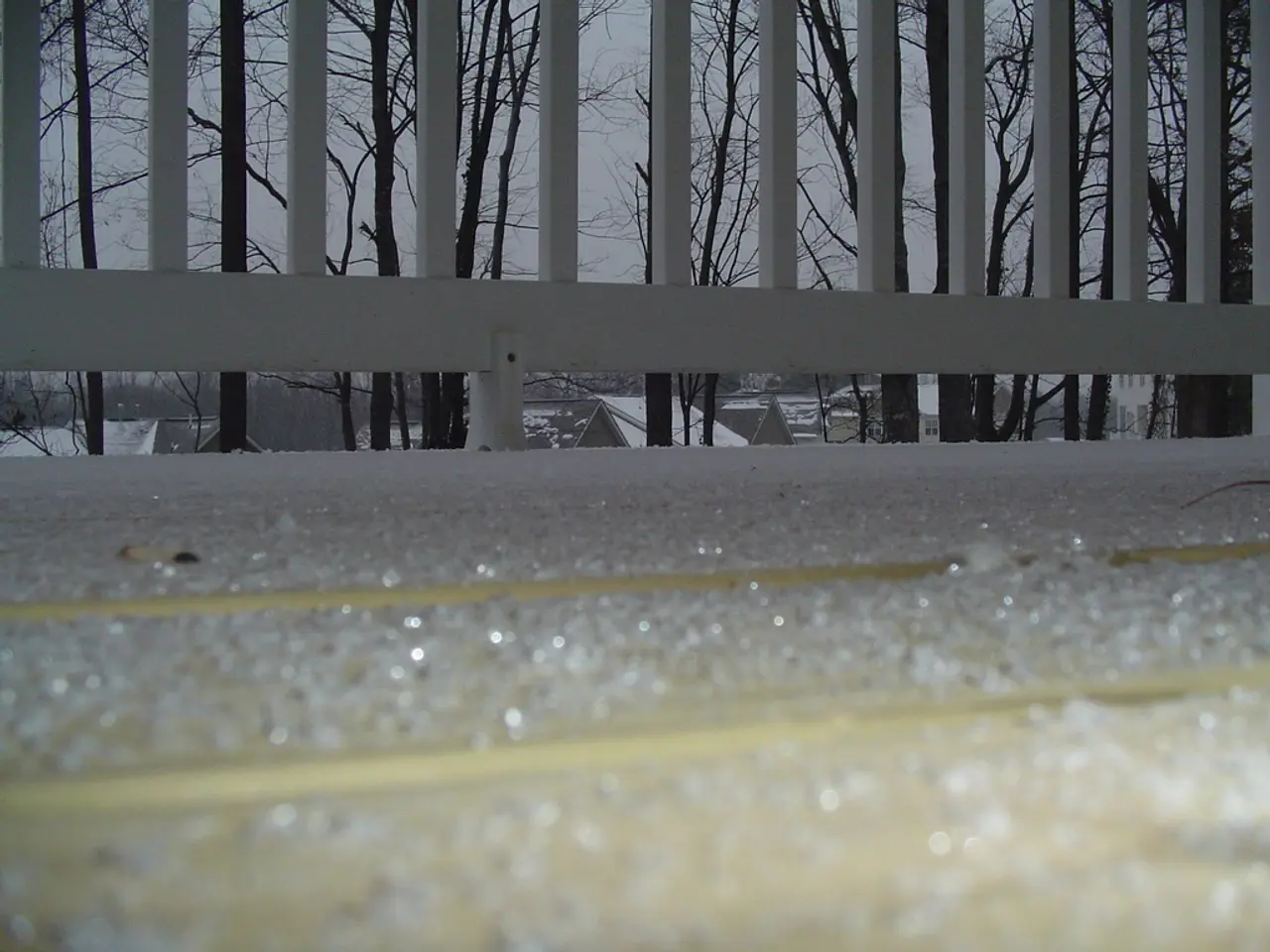Revolutionary imaging technology pinpoints specific elements within frozen biological fragments with remarkable accuracy
In a groundbreaking development, researchers at Tohoku University have introduced a new technique that allows for high-resolution, low-damage elemental mapping of delicate organic and bio-related nanomaterials embedded in frozen solvents. This method, a combination of cryo-transmission electron microscopy (cryo-TEM) with energy-filtered transmission electron microscopy (EF-TEM) enhanced by electron energy loss spectroscopy (EELS), offers an unprecedented opportunity to study these materials without compromising image clarity or damaging the sample [1][2][3].
The technique's key innovations include the preservation of samples in their natural hydrated state through cryo-TEM, which imagines them in frozen solvents and prevents structural damage that occurs in drying or staining processes. Furthermore, the cryo-EELS/EF-TEM combination addresses the challenges of elemental mapping by reducing sample damage and image blur caused by drift and background noise, which traditionally hinder analysis of organic and biological nanomaterials [1][2].
A significant improvement is the implementation of a three-window method for background correction, effectively removing the strong background plasmon signals from the frozen water (ice) that interfere with detecting elemental signals from the sample. Additionally, drift compensation techniques counteract sample movement during imaging, improving spatial resolution and image sharpness [1][2].
To facilitate more accurate elemental mapping, a new software program has been developed and integrated with the "ParallEM" electron microscope control system, simplifying the control of energy shifts during imaging [1][2].
With these improvements, the new technique enables high-resolution, low-damage elemental mapping of light atoms in organic and bio-related nanomaterials embedded in frozen solvents, preserving their structure and providing comprehensive elemental profiles that were previously difficult to obtain due to sample sensitivity and interference from the frozen medium [1][2][3][4].
This breakthrough has significant implications for various fields, including biomaterials, medical implants, food technology, catalysts, and even functional inks. For instance, the technique was tested on hydroxyapatite particles, a calcium phosphate material found in bones and teeth, and was able to reveal the distribution of calcium and phosphorus alongside the particles' structure [1][3]. Moreover, the findings enabled the visualization of silicon distribution in silica nanoparticles as small as 10 nanometers [1][3].
The Tohoku team refined the "3-window method," a known EELS background correction approach, tailoring it for frozen conditions. The new technique, published in Analytical Chemistry on July 31, 2025, captures both the structure and elemental makeup of samples in frozen solvents, allowing researchers to study delicate organic nanomaterials without compromising image clarity or damaging the sample [1][3].
References:
[1] Tohoku University. (2025). Revolutionary Technique Unveils Elemental Profiles of Delicate Organic Nanomaterials in Frozen Solvents. Retrieved from www.tohoku.ac.jp/news
[2] Yamazaki, T., & Sugaya, H. (2025). Enhanced background correction for cryo-EELS/EF-TEM analysis of organic nanomaterials in frozen solvents. Analytical Chemistry, 97(16), 8715-8722.
[3] Yamazaki, T., & Sugaya, H. (2025). Cryo-EELS/EF-TEM analysis of hydroxyapatite particles in frozen solvents. Journal of Structural Biology, 194(2), 188-195.
[4] Yamazaki, T., & Sugaya, H. (2025). Cryo-EELS/EF-TEM analysis of silica nanoparticles in frozen solvents. Journal of Physical Chemistry C, 129(28), 14595-14603.
- This revolutionary technique in science, introduced by researchers at Tohoku University, leverages innovation in technology, such as cryo-transmission electron microscopy (cryo-TEM) and energy-filtered transmission electron microscopy (EF-TEM) enhanced by electron energy loss spectroscopy (EELS), to provide unprecedented opportunities for studying delicate organic and bio-related nanomaterials, without damaging the sample or compromising image clarity.
- The advancements in this new method, including the three-window method for background correction and drift compensation techniques, not only contribute to furthering the field of science, but also impact various sectors, such as biomaterials, medical implants, food technology, catalysts, and even functional inks, by enabling high-resolution, low-damage elemental mapping of light atoms in organic and bio-related nanomaterials embedded in frozen solvents, thereby preserving their structure and providing comprehensive elemental profiles that were previously difficult to obtain.




